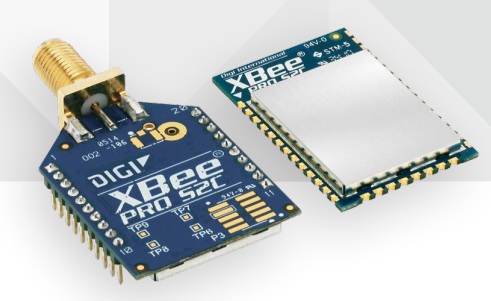- Home
- Symmetry Blog
- Digi International Enabling IoT in Space
Digi International Enabling IoT in Space
About Symmetry Electronics
Established in 1998, Symmetry Electronics, a Division of Braemac, is a global distributor of electronic components and systems. Combining premier components and comprehensive value-added services with an expert in-house engineering team, Symmetry supports engineers in the design, development, and deployment of a broad range of connected technologies.
Exponential Technology Group Member
Acquired by Berkshire Hathaway company TTI, Inc. in 2017, Symmetry Electronics is a proud Exponential Technology Group (XTG) member. A collection of specialty semiconductor distributors and engineering design firms, XTG stands alongside industry leaders TTI Inc., Mouser Electronics, and Sager Electronics. Together, we provide a united global supply chain solution with the shared mission of simplifying engineering, offering affordable technologies, and assisting engineers in accelerating time to market. For more information about XTG, visit www.xponentialgroup.com.

Digi International®, a leading global provider of machine-to-machine (M2M) and Internet of Things (IoT) connectivity products and services, announced that on Monday, March 6 at approximately 12:20 p.m. C.T. its Digi XBee® 802.15.4 modules will be used by the National Aeronautics and Space Administration (NASA) as part of a test program for wireless communications within satellites and payloads from the International Space Station (ISS).
Slightly after noontime on Monday, at an altitude of approximately 250 miles, the ISS will release a TechEdSat 5 (Technical and Educational Satellite 5), a cuboid-shaped device, approximately the size of a fire extinguisher. After a 30-minute time-period, Digi XBee modules, taking the place of wired connections, will begin to operate as the wireless “data-crossroads” between key components of the satellite. At ten second intervals, the Digi XBees will transmit important orbital data within the satellite including the satellite’s translational acceleration and angular rate, magnetic field, atmospheric pressure, temperature, and strain. This data will then be used in the design of future satellites.
Typically, data communications are transmitted through wired connections, but as part of a “wireless-in-space” effort, NASA is working to augment traditional wiring with wireless networking to lessen weight, increase payload capacity and create new communication models. For example, through wireless communications, future satellites could communicate directly with each other in a mesh network.
“This is another example of the limitless possibilities of wireless communications,” said Rob Faludi, chief innovation officer, Digi International. “NASA is continually expanding the boundaries of creating and applying innovative technologies and we’re thrilled to be part of these efforts.”
In addition to testing wireless communications within the satellite while in orbit, the mission will include the testing of a passive de-orbit system for the ISS to bring samples back to earth in an “on-demand” model.
Typical de-orbit delivery methods require the use of rocket technology to decelerate delivery payloads, but, due to safety concerns, storage of rockets on the ISS is not a possibility. NASA’s Ames Research Center in California’s Silicon Valley has been experimenting with “drag” technology to deliver payloads in a parachute-like manner back to earth through the use of an Exo-Brake, a specially-designed braking device that operates similar to a parachute at extremely high speeds and low air pressures, designed to descend to earth over a period of weeks.
Over the course of its descent, Digi XBee will be transmitting data on the performance and testing of the modulating Exo-Brake as it changes its surface area to allow the satellite to more precisely enter the atmosphere.
As a first test, the initial deployment will call for the satellite to be burned up in the atmosphere, but later missions are planned with wingsail style parachutes that will continue the effort to bring perishable experiment samples quickly back from the ISS.
“NASA is looking at wireless sensor technology as another tool to help understand vehicle dynamics, heat-shield or ablator performance, and fluid mechanics” said Marcus S. Murbach, principal investigator, at Ames. “Of particular interest is the application of wireless sensor technology to a controllable Exo-Brake – to which data can be compared to entry systems models of drag-based de-orbit.”
For more information on Digi’s role in working with NASA, see “Digi International Onboard NASA’s SOAREX-8 Suborbital Flight.”
